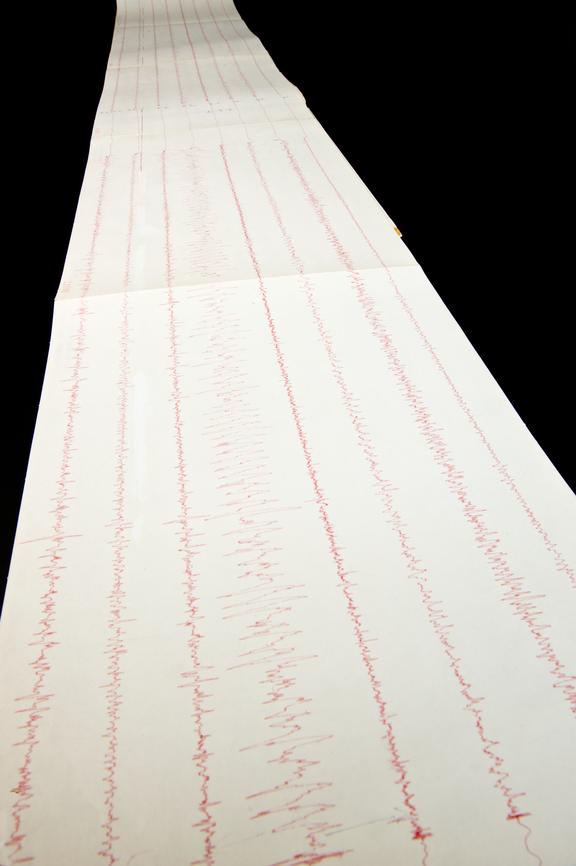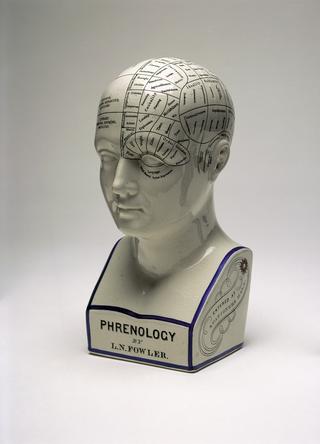
Electroencephalogram from epileptic patient

The first intracerebral EEG taken in 1958 from an epileptic patient at the Burden Neurological Institute. The record was taken on the Type T Dynograph. Sheaves of 6 insulated stainless steel electrodes were inserted in left and right frontal (medial and lateral), temporal (medial and lateral ) and occipital lobes. Abnormal EEG activity occurs at electrode 11 in the left lateral frontal region and at electrode 23 in the left lateral temporal region. The left temporal lobe was later removed.
An electroencephalogram or EEG is a recording of electrical signals within the brain. This EEG printout was created in 1958 at the Burden Neurological Institute in Bristol. It is the first example taken at the institute. This EEG shows the brain activity of an epileptic patient. Electrical signals of areas of the brain were stimulated and recorded by placing insulated stainless steel electrodes directly into the brain. The EEG shows abnormal activity occurring at two points within the brain: the left lateral frontal region and the left lateral temporal region. The left temporal lobe was later removed in an operation called a lobotomy.
The Burden Neurological Institute was founded by the Reverend Burden in 1939. It is an independently-funded research unit. It specialises in the human nervous system and human neurological disorders.
Details
- Category:
- Psychology, Psychiatry & Anthropometry
- Object Number:
- 2001-193
- Materials:
- paper
- Measurements:
-
overall: 218 mm x 305 mm .23kg
- type:
- eeg
- credit:
- The Burden Neurological Institute




